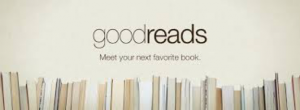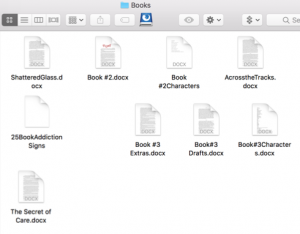Archival research, traditionally, is a practice where a writer enters an “archive” with a question in mind and searches the texts for sources that support, refute, or confuse the topic at hand. When dealing with a personal archive assignment, there is no archive that we can enter. Instead, we must discern what symbols, pictures, documents, or other sources can be used as our “documents” to support, refute, or confuse the topic at hand. The most effective archival research projects allow the author to delve into a subject in which there is not a lot of information or in which there is a large gap in the subject that the author intends to close. There is often a “call to action” that prompts a community of authors to delve deeper into the subject with the aid of archival research to find primary sources that fill in these holes. (Royster and Williams, 1999; Enoch, 2010; Smith, 2016; Lueck, 2017).
My writing process has changed tremendously since I first began crafting essays; since my middle school years, I have learned how to methodically start the writing process as opposed to the one-step method that I preferred then. Anyone who saw my writing in the 7th grade would agree that, though I understood the fundamentals, I was still writing in the 5-paragraph essay format. I was engaged in the prompt because my work was graded, but my summarization offered no real analysis of how I felt about the experiences I had or the topic assigned. My word choice and voice also provided the same conclusion; the methodical approach that I took would be more in line with a Biology lab analysis.
It wasn’t until after I entered high school that I began to understand that writing was more than summaries and reflections. The first critical essay assigned to me in high school offered a chance to practice new grammar and to display my newfound understanding of “high school” writing while also writing about a subject that I cared about. The writing was more complicated than middle school, and the paragraph structure was finally shifting away from the 5-paragraph format. But more importantly, my writer’s voice was beginning to come out in a way that allowed me to learn who I was as a writer. It is not the essays themselves that are the most shocking piece of my archival history, but the transition from the first to the second that emphasizes my growth as a writer. If someone were to read both of my essays, they would undoubtedly see the improvement and give credit to an excellent academic environment, Presentation High School. However, if someone were to read both of my essays, they most likely would not see the steps that I took to write both pieces and whether I received help or proofreading help. The primary source is available, but the historical background still obscured the context.
I understood who I was as a reader. I had been reading anything that I could get my hands on for some time, and my genre preferences were becoming more evident. My introduction to Goodreads organized my “to-be-read” list, but it also summarized the elements that I most appreciated in an author’s writing. The ability to classify what it was that two books had in common, and what it was that I enjoyed so much, changed the direction of my writing. If an outsider were to look onto my Goodreads profile, they would see the books that I enjoy and would most likely be able to relate the standard trends to my writing style. Every writer grows by imitation: in elementary school, we imitate the grammatical and punctuation rules that are taught; in middle school, we mimic the books that we begin to delve in to; in high school, we echo the books that we read, the teachers that guide us, and the academic journals that we begin to explore. It is only in college that we are given the freedom to move past the imitation game and concisely combine all the instruction that we have been given with the voice that we have developed.
Growing up, I wanted to be an author. I “wrote” my first book when I was six years old, an impressive five small pages detailing the harrowing story of Rosie the Pig and her haunted pig house. Thankfully, my creative writing skills have improved since that achievement. All throughout high school, I wrote. I dabbled in poetry, tried my best to create song lyrics, and then found my calling in creative writing. If someone were to look through my computer folders, through the books that I have written, they would most likely see something that is merely half-crafted. The ideas in my head often don’t translate onto paper automatically, and I believe that an outsider looking through my archival history would be able to see trace elements of this both in what my computer contains and the style of my essays. Unless I am writing for a biology lab analysis, I intertwine aspects of creative writing style with my academic writing.
Writing is very affected by external circumstances, as I assume many other writers would attest. Whether I am sitting inside at my desk or hurriedly typing away in Benson Center determines the type of writing that I am developing. My best composing takes place in a quiet location, preferably with no one around except for my dog. This silence gives me the patience to flush out any ideas in my head, unlike if I were to sit in Benson where the melee is hugely distracting. The location of my writing is not common knowledge to the reader, however; if sometime in the future, someone was to read several of my essays, they would not know whether I wrote in my room or Benson Center. They would not have the information to contextualize what type of writing that they are reading.
My grandmother is not an author, and she is not an avid reader; in fact, she has admitted that she has never finished an entire book. Despite this shortcoming, she has a keen eye for grammatical errors, and her wit has transferred over into much of my writing. The essay that I wrote in high school is an excellent primary source for my archival history, but there is still much of the contextual history that is left to be desired. A reader could see my capabilities as a writer and my account, but they would not know the process that I undertook to craft such an improved piece of writing. My grandmother not only gave me the information that I needed to write the essay, but she also listened to me recite it repeatedly to ensure that it all made sense. She turned my writing process from a personal process, in which I wrote in a way that I felt most comfortable with, to a community-based experience, in which I wrote in a way that I felt my discourse community would most strongly respond.
Archival research is much more inclusive of texts that would often not be classified as “educational” sources. Pictures are more descriptive than even the most detailed of essays because while our mind can provide us with an imagined picture of what the author is talking about, the picture allows us to see precisely what the author saw as he or she was writing.
Enoch’s text was the most thought-provoking and most helpful for me to understand the extent of archival research. My prior knowledge of archival research consisted of an imagined picture of a librarian sitting in a crowded room, scanning ancient texts and simultaneously taking notes. Enoch’s writing emphasized that while the search for manuscripts is essential, it is the analysis and the methodologies that are the most critical to the archival method. The texts act as a source, as the microfilm did for Enoch, but the interpretation and translation of the information are what lend the most information to filling in the gaps of the topic.
Works Cited
Enoch, Jessica. “Changing Research Methods, Changing History: A Reflection on Language, Location, and Archive.” Composition Studies 38.2 (2010): 47-73. Print.
Lueck, Amy. “‘Classbook Sense’: Genre and Girls’ School Yearbooks in the Early-Twentieth Century American High School.” College English 79.4 (2017): 358-383. Print.
Royster, Jaqueline Jones and Jean C. Williams. “History in the Spaces Left: African American Presence and Narratives of Composition Studies.” College Composition and Communication 50.4 (1999): 563-584. Print.
Smith, Kevin G. “Negotiating Community Literacy Practice: Public Memory Work and the Boston Marathon Bombing Digital Archive.” Computers and Composition 40 (2016): 115-130. Print.






